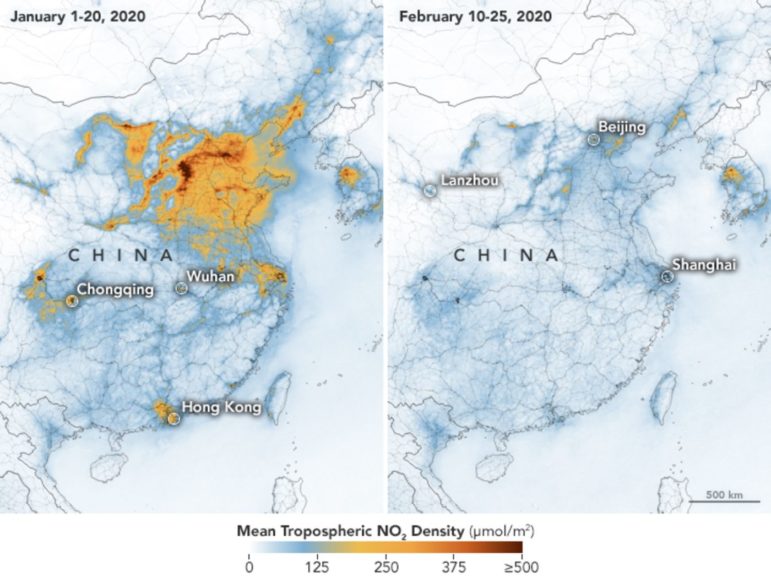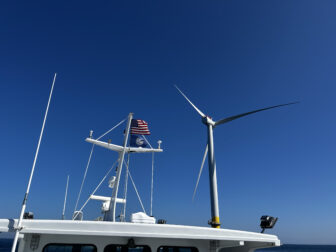A couple of weeks into the worldwide observance of social distancing practices and pandemic-preempting government lock-downs, miraculous tales of a rejuvenated planet in typically smog-choked, polluted corners of the world began to populate our social media news feeds. Dolphins were frolicking in Venice’s canals again! From India, video footage emerged of a species of civet cat long thought to be extinct, strolling the empty streets of Calcutta like it owned the place. Over Chinese cities, clouds of toxic gas around industrial centers have dissipated, with emissions down at least 25% in February due to efforts to control the coronavirus, and residents can breathe freely for the first time in recent memory.
These are beautiful images, for all that they play into self-flagellating human narratives. Look how bad we are for the planet, the story goes, but isn’t it amazing how quickly Mother Nature rebounds to a state of pristine, Edenic glory when we leave her alone for a few days! The truly unfortunate thing about each of these stories, though, is that they aren’t true—or at best, they are heavily qualified. Each of the first two links in the previous paragraph leads to an article debunking the associated claim. There were no dolphins in the canals of Venice; the person who took that video of a civet cat in India had mistaken it for an endangered cousin. The third link, a CNN report about lower CO2 emissions and air pollution in China, verifies that these levels are down in Hubei and other areas under quarantine, but with the caveat that, as soon as the economies of these regions start back up, pollution levels will quickly rebound to previous levels, and may even exceed these levels, as the country tries to make up for many weeks’ worth of halted production.

Although the day may seem far off now, there will come a time in the not-too-distant future when COVID-19 is no longer a meaningful threat. Treatments are likely to emerge that reduce the severity of symptoms and the mortality rate, and potential vaccines have already entered human trials, although it will take many months to sufficiently vet and produce these. When that moment comes, surely we will collectively breathe a sigh of relief. Yet we will still be facing record-high annual temperatures, rising sea levels and historically catastrophic weather. There can be no palliative treatment, no vaccine for these. Just as governments worldwide mobilized rapidly to counter the spread of the coronavirus, modern society must reorganize and restructure itself radically if it hopes to withstand the systemic shocks that the effects of climate change are all but certain to augur.
Some argue that the current pandemic is an opportunity to model effective long-term responses to climate change. As with a fire drill, or a dress rehearsal, we are learning first-hand how well we respond to a threat that majorly disrupts the functioning of society, but does not in itself threaten to destroy it. “COVID-19 is climate on warp speed,” says climate economist Gernot Wagner. “Everything with climate is decades; here it’s days. Climate is centuries; here it’s weeks.” Hence, the damage that climate change threatens to wreak will not occur in the span of a few weeks or months. Rather, following the progression of over a century of scaled industrial activity on this planet, these effects will continue to show themselves gradually—yet their impact will be orders of magnitude more profound.
“The virus has shown,” writes journalist Beth Gardiner, “that if you wait until you can see the impact, it is too late to stop it.” This statement is sure to hold true many times over for climate change. Yet in dealing with the current crisis, we seem to have lost sight of the primary threat to humanity’s continued growth and well-being in our time. Just last week, the EPA introduced “drastically relaxe[d]” rules for polluters in the midst of the coronavirus’ spread.
COVID-19 is a global emergency, to be sure, and we are right to focus the majority of our efforts and energies on preventing its spread and minimizing the loss of life that it causes. Nevertheless, we owe it to ourselves and to future generations to look further ahead than the end of the quarantine.

Text by Joseph Pickert. See his original blog post here.






